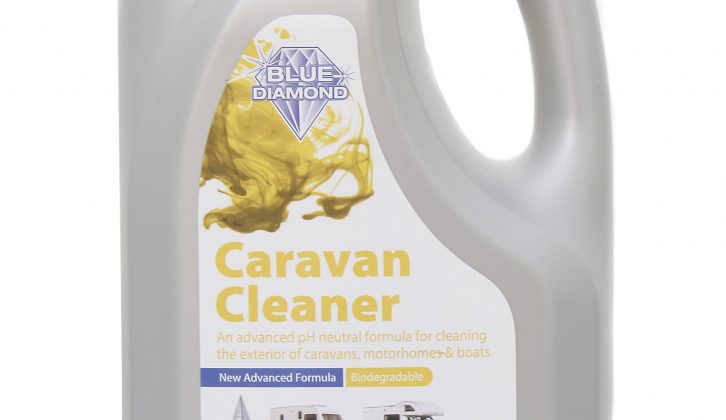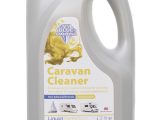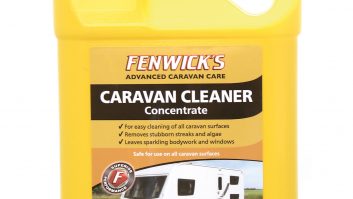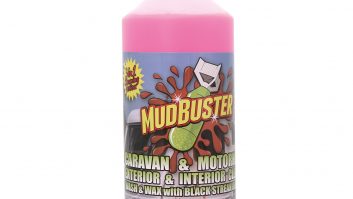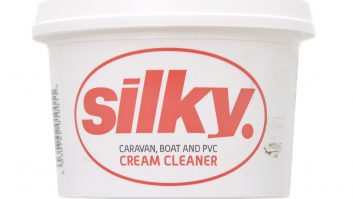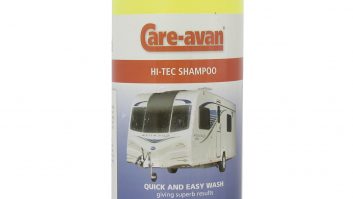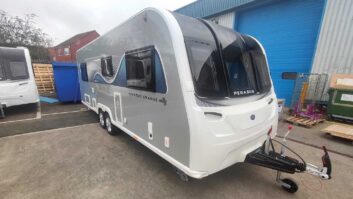Verdict
Remember the old adage, ‘All that glitters…’ well this applies to Blue Diamond Perfection Caravan Cleaner. On the surface it would appear that you can get double the amount of caravan cleaning concentrate for your money. But when you actually dilute it in a bucket, ready to start cleaning your caravan, you’ll realise there’s a catch. Whereas the comparable Care-avan product gives you 500 litres of solution per litre, at £7.50, the Blue Diamond cleaner works out at 67 litres of solution per litre, at £4.25 per litre. We’ve awarded it two stars.
Pros
If your van is only slightly dirty, this cleaner is fine
It’s PH neutral and won’t harm your caravan
Mildly effective
Cons
It’s less concentrated than rival caravan cleaners
Poor value for money
Bulky packaging
It’s not hard to understand why, at the start of the season, many of us go to great lengths to get our vans spick-and-span before heading off on our travels.
Many newcomers to touring may wonder why seasoned caravanners go to similar all-out efforts at the end of the season. After all, why bother getting a caravan gleaming if it’s going to be parked up for several months?
Anything that sits on your caravan’s surface – even very light dust marks – has the potential, if continually damp, to harbour algae and mould. Most of us appreciate that green algae is unsightly and difficult to shift if left untreated until the next season.
However, not everybody is aware that algae can get behind seals and cause them to deteriorate over time. Some surfaces, such as aluminium, can be permanently marked by the stuff.
Come winter, it’s wise to treat your van to a layer of protective wax polish or winterproofer. Both substances prevent dirt from latching on to your tourer’s exterior, but they can only be applied to a clean surface – once again making that end-of-season spruce-up crucial.
Even covers, perhaps the most foolproof way of protecting your caravan over the winter, require the van to be cleaned fully before being fitted. All covers move in the wind – albeit slightly – and if there’s even minimal dirt under it, the combination of dirt and the continuous movement agitating it can lead to scratched panels.
In our search for the perfect cleaner, we kicked off by trying each one at the recommended dilution on a much-neglected caravan bearing a thick coating of algae and countless black streaks. First, we wanted to see whether each product could tackle these maladies. We also factored in how easy they made cleaning.
We preferred cleaners with a pleasant smell, because the aroma lingers after the scrubbing is finished.
It’s always a bonus if a cleaner is versatile. Some can be used neat or at a lower dilution to tackle really tough stains. Some can’t. Among both types are products that can be used on other types of surfaces, such as upholstery or carpets, negating the need for separate cleaners.
Different methods of application were something else we had to consider. Trigger sprays make applying them to isolated stains a doddle. While pressure-washing is far from the best way to clean a caravan, it can be done safely with the correct implements – such as flow-through brushes. It’s a bonus if a cleaner can be used in a power-washer.
Talking of dilutions and saving money, we also calculated how much usable cleaner you get if you fully dilute the bottle down to the recommended concentration. We soon found that bottle size and initial price are poor indicators of actual value for money.
There’s a good choice of caravan cleaning products on the market, so we chose a selection to try out on the Practical Caravan test bench. We tested the MudBuster Caravan & Motorhome Exterior & Interior Wash & Wax, costing £8.99 for a litre, the Fenwick’s Caravan Cleaner Concentrate, costing £8.99 for a litre, the Silky Cream Cleaner at £3.99 for a tub and the Care-avan Hi-Tec Shampoo, priced at £7.50 for a litre.
In this review we’ll focus on the Blue Diamond Perfection Caravan Cleaner at £8.49 per litre.
With grime-shifting performance that just equals the laid-back Care-avan mix, it would be easy to categorise the Blue Diamond cleaner as a budget product. After all, you get two litres for roughly the price that other companies charge for half the amount. Outright cleaning performance lags behind most, but it’s ample for the average, well cared-for van that’s far from filthy.
The only problem with this theory is that the product doesn’t actually go that far. It’ll mix up to 133 litres at the correct dilution, but that doesn’t compare well with the 500 litres from a bottle of Care-avan, which performs similarly and costs less.
In its defence, you won’t worry about using it on your pride and joy, thanks to its pH neutral formula and long-standing reputation.
Bottle size and initial price are poor indicators of actual value for money
Technical Specifications
| 2-litre container | £8.49 |
| 2 litres makes | 133 litres of cleaning solution |
| PH | Neutral |
